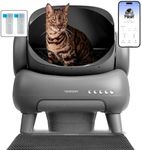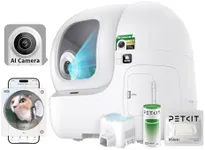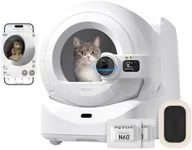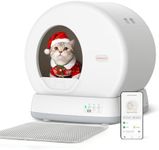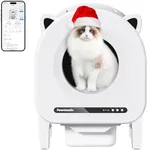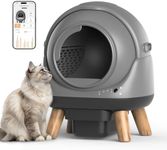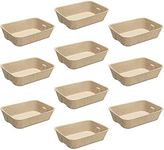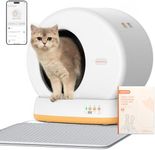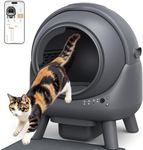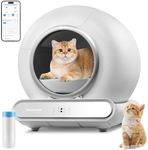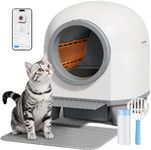Buying Guide for the Best Robotic Litter Boxes
Choosing the right robotic litter box for your cat can make a significant difference in maintaining a clean and odor-free home while providing convenience for both you and your pet. When selecting a robotic litter box, it's important to consider factors such as the size of your cat, the space available in your home, and the specific features that will best suit your lifestyle and your cat's needs. Understanding the key specifications will help you make an informed decision and ensure that the litter box you choose is a perfect fit for your household.Size and CapacityThe size and capacity of a robotic litter box refer to the dimensions of the unit and how much waste it can hold before needing to be emptied. This is important because it determines how often you'll need to maintain the litter box and whether it can accommodate your cat comfortably. Smaller units are suitable for single-cat households or smaller spaces, while larger units are better for multiple cats or larger breeds. Consider the size of your cat and the available space in your home when choosing the right size and capacity.
Self-Cleaning MechanismThe self-cleaning mechanism is the feature that automatically removes waste from the litter box, reducing the need for manual scooping. This is a key feature for convenience and hygiene. Different models use various methods, such as rakes or rotating mechanisms, to clean the litter. When choosing a self-cleaning mechanism, consider how quiet and efficient it is, as well as how well it handles different types of litter. If you have a skittish cat, a quieter mechanism might be preferable.
Odor ControlOdor control is crucial in a litter box to keep your home smelling fresh. Robotic litter boxes often include features like carbon filters or sealed waste compartments to minimize odors. The effectiveness of odor control can vary between models, so it's important to consider how sensitive you are to smells and how often you are willing to change filters or empty the waste compartment. If odor is a major concern, look for models with advanced odor control features.
Ease of MaintenanceEase of maintenance refers to how simple it is to clean and maintain the robotic litter box. This includes how easy it is to empty the waste compartment, replace filters, and clean the unit itself. A model that is easy to maintain will save you time and effort in the long run. Consider how often you are willing to perform maintenance tasks and choose a model that aligns with your preferences. Some models offer features like app notifications to remind you when maintenance is needed.
Litter CompatibilityLitter compatibility refers to the types of litter that can be used with the robotic litter box. Some models are designed to work with specific types of litter, such as clumping or non-clumping, while others are more versatile. It's important to choose a model that is compatible with the type of litter you prefer or are already using. Consider your cat's preferences and any allergies or sensitivities they may have when selecting a litter type.
Power SourceThe power source of a robotic litter box can be either battery-operated or plug-in. This is important to consider based on the location where you plan to place the litter box and the availability of power outlets. Battery-operated models offer more flexibility in placement but may require frequent battery changes, while plug-in models provide consistent power but need to be near an outlet. Consider your home's layout and your preference for convenience when choosing the power source.
